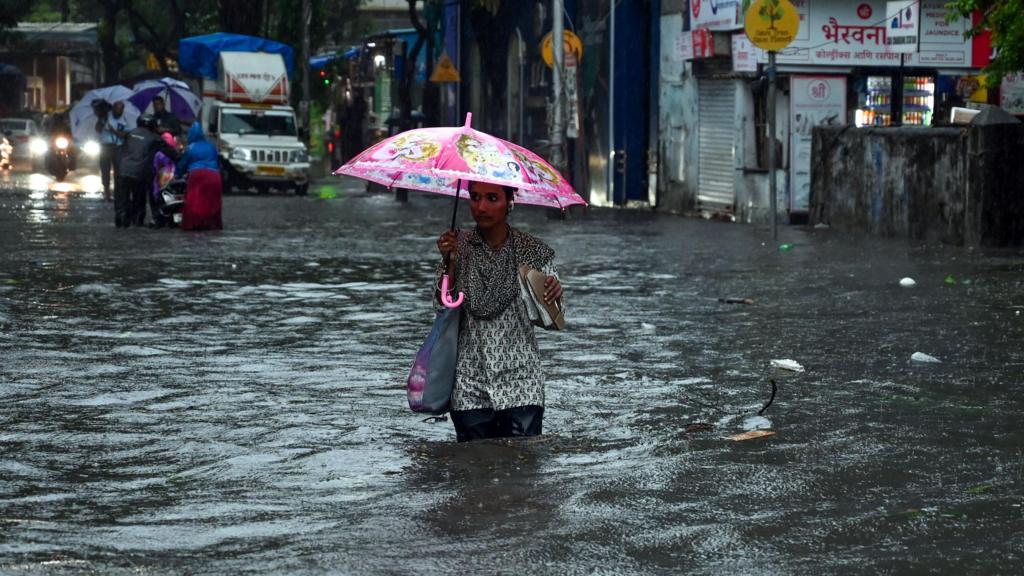“Who is to blame for this chaos?”
This question resonated throughout Mumbai, India’s financial hub, as countless residents were again left stranded, drenched, and exasperated by severe pre-monsoon rains.
Torrential downpours brought the city to a standstill. Roads transformed into waterways, vehicles stalled, and low-lying areas became inundated within hours.
Even a recently constructed underground metro station succumbed to the deluge, with images and videos of muddy water flooding the station going viral.
The pre-monsoon downpour starkly highlighted the city’s vulnerable infrastructure, sparking widespread public anger on social media.
The Brihanmumbai Municipal Corporation (BMC), one of India’s wealthiest municipal bodies responsible for Mumbai’s infrastructure, initially attributed the issue to clogged drains and debris from metro construction, as reported by The Hindustan Times.
Following public criticism, the BMC deployed dewatering pumps in flood-prone zones and started manually clearing drain blockages. However, for many citizens, these measures were too little, too late.
This crisis is neither unprecedented nor unique to Mumbai.
From Delhi in the north to Bengaluru in the south, India’s largest cities experience annual monsoon flooding. Roads crumble, drains overflow, infrastructure fails, and traffic grinds to a halt.
Experts cite rapid, unplanned urbanization, deficient infrastructure, and years of environmental neglect as the primary causes.
“Urban expansion has far outpaced the development of supporting infrastructure, especially water and drainage systems,” explains Dikshu Kukreja, a Delhi-based architect and urban planner.
“Many cities rely on outdated systems designed decades ago. Uncontrolled expansion has led to the construction over or neglect of natural drainage channels, wetlands, and water bodies that once absorbed excess rainwater,” he adds.
Experts emphasize that there’s no single solution, as each city presents unique challenges. Geography, population density, and climate must be considered when developing effective solutions.
India receives 80% of its annual rainfall during the monsoon season, typically from June to September.
The monsoon is vital for agriculture and the livelihoods of millions of Indian farmers who depend on seasonal rainfall in areas lacking proper irrigation.
However, experts warn that climate change has increased the frequency of erratic weather patterns – including unseasonal rains, flash floods, and droughts linked to extreme heat – directly impacting millions.
This year, the monsoon arrived a week early in parts of southern India, catching authorities off guard.
“A low-pressure system formed over the eastern central Arabian Sea, accelerating the monsoon current,” explains Mahesh Palawat, vice-president of meteorology and climate change at Skymet Weather.
In Delhi, the Minto bridge epitomizes the city’s annual monsoon woes. Almost every year, heavy rain causes buses or lorries to become trapped under the bridge, highlighting the city’s struggle with urban flooding.
Delhi experienced its wettest May since 1901, with over 185mm of rainfall, according to the Indian Meteorological Department.
Many residents reported property damage.
Media reports indicate at least four fatalities and numerous injuries during two severe storms in May.
Meanwhile, in Bengaluru, over 2,000kms (1,240 miles) from the capital, the situation differs but shares the same root cause.
Once renowned for its lake network that managed excess rainwater, Bengaluru has seen extensive encroachment on these water bodies. Apartment complexes, commercial centers, and roads now occupy their place, leaving the city vulnerable to flooding.
“Bengaluru is situated across three major valleys with natural water flow. Most of the city’s lakes are located within these valleys,” explains Ram Prasad, a lake conservation activist.
These valleys were originally designated no-construction zones, but over time, encroachment occurred, and subsequent legal changes permitted infrastructure development, he says.
“Converting lakes – natural flood buffers – into built-up areas leaves water with nowhere to go. Bengaluru’s current flooding is a direct result of poor urban planning.”
Mr. Prasad points out that Bengaluru’s hilly terrain was never designed for flooding; the current situation is entirely man-made.
Building code violations, particularly construction narrowing or covering stormwater drains, have exacerbated the issue, he adds.
Mumbai faces geographical challenges; many areas are low-lying and near the sea, increasing flood vulnerability during heavy rains and high tides.
However, experts say human actions have worsened the situation: mangrove deforestation (mangroves act as natural flood barriers) and building on floodplains.
“The failure is systemic – starting with planning that often overlooks future climate variability, exacerbated by poor implementation, and compounded by weak regulatory enforcement,” Mr. Kukreja says. “Political will is often reactive, addressing disasters instead of investing in long-term resilience.”
This isn’t limited to major cities; smaller towns often suffer equally, if not more.
Over the weekend, at least 30 people perished in India’s northeastern states due to heavy rain-induced flooding and landslides. Tens of thousands have been affected, with ongoing rescue efforts.
So, is prevention possible?
“Yes,” says Mr. Kukreja, but only through a long-term, coordinated strategy.
He suggests using mapping and real-time sensors to identify high-risk areas and warn communities. Predictive models can improve response planning.
“However, technology alone is insufficient; it requires responsive governance and community participation,” he adds.
For India’s cities to withstand the rains, they need more than temporary fixes. Proactive planning is crucial before further damage occurs.
Follow BBC News India on Instagram, YouTube, Twitter and Facebook.

